When Bob Richard was 20 years old, he could’ve never imagined how five words would shape the rest of his life.
“He looked over his glasses at me and said uh, ‘can you ride a horse?’” said Bob Richard reminiscing about those words coming from Yellowstone National Park Superintendent Lon Garrison in 1956.
Richard was with his father, a newspaper journalist, who was interviewing the superintendent for a story when the spontaneous offer happened.
Raised on a ranch near Cody, Wyoming, working horses and driving tractors by the age of 10, Richard was confident about accepting this new opportunity. With family ties to the nation’s first national park that spans back generations, he felt an intrinsically natural connection to Yellowstone.

Bob Richard enjoying life in Cody, Wyoming. Provided by Bob Richard
Now at the age of 86 Bob Richard speaks with affection about the man who hired him on the spot as the first Front Country Horse Patrolman in Yellowstone National Park.
“He was a ranger’s ranger. I admired him from the minute I met him,” said Richard.
That single moment began the thread of Yellowstone weaving through his life as a horseback ranger, husband, father, U.S. Marine Corps combat pilot, preservationist, photographer, author and storyteller.
His main duty as a ranger was to help guests navigate and experience Yellowstone in a way that would leave a lasting impression on them beyond the souvenir T-shirt. Those duties included serving as the park’s law enforcement at the time; being a naturalist to point out wildlife, flora and fauna; taking money at the gate; patrolling the campgrounds and greeting and talking to visitors which is something he still enjoys doing today.
“I wrote less than six tickets in six summers in Yellowstone,” Richard says with a laugh regarding his light-handed approach to law enforcement in the park. “My approach was that they're here to enjoy the park.”

Bob Richard at a local book signing. Provided by Bob Richard
Today, Bob Richard is a respected historian, guide and storyteller. He is one of the last remaining voices to echo some of the true stories about Yellowstone, Buffalo Bill and the town of Cody, that make this region legendary.
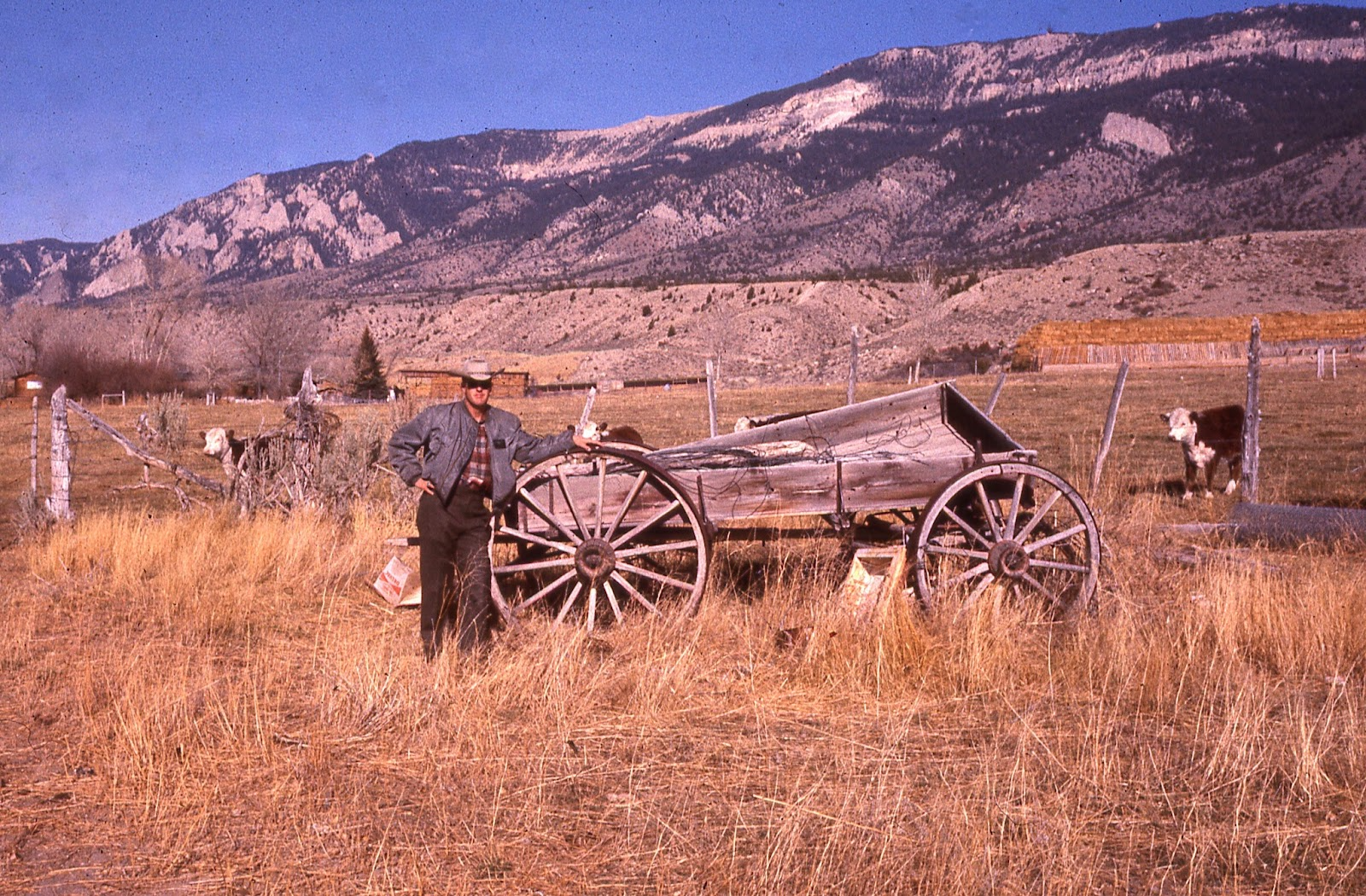
Bob Richard at his family ranch in 1969. Provided by Bob Richard
Once a rancher always a rancher
Growing up on a ranch with lifelong ties to the region Bob Richard’s exposure to the pristine nature in Yellowstone started at a young age.
“When I was 10, I could drive my granddad and my grandmother to the park in the pickup as long as I remembered the names of every stream, every mountain and the history. When I missed something then I had to sit between them, and granddad would light up one of his big black cigars and they were gaggers and so I learned about the park quickly,” said Richard. Richard’s early lessons in Yellowstone came from his uncle (Ned Frost) and grandfather (Fred Richard) who ran the Frost and Richard Camping Company taking 150 guests at a time on 18-day expeditions through Yellowstone in the early 1900s. This is quite a feat when you consider they traversed the figure eight Grand Loop in Yellowstone by wagon and horseback. When cars came onto the scene in 1915 wagons were barred so the duo used horses and trucks to transport guests and camping supplies. It was a family business through and through until 1916 when WWI took a drastic hit on tourism.
Richard’s father also had deep ties to Yellowstone as a journalist, outdoor photographer and publisher of the Cody Times covering many stories in the park. Yellowstone was a foundation in Richard’s life long before he became a ranger.

Bob Richard leading pack trips in Yellowstone. Provided by Bob Richard
It is this early appreciation for Yellowstone’s untouched landscape and natural environment that instilled what he calls his responsibility to protect it.
“When I share it with people [Yellowstone] I want them to treat it as they would their own and not throw trash, not disfigure trees, but to enjoy it, touch it, hug a tree, enjoy casting a line in a trout stream where there may not be another fisherman's tracks along the stream and leave it as they find it,” said Richard. “When I did pack trips in the early days, anything I took in - I packed out. I've tried to teach people to respect the beauty of our outdoors and to keep it that way for several generations.”
This foundational appreciation for not just Yellowstone, but for nature shaped Richard’s life in every aspect. This is what makes him a valuable resource for passing that information and philosophy down to the tour guides he trains and guests who visit the park today.
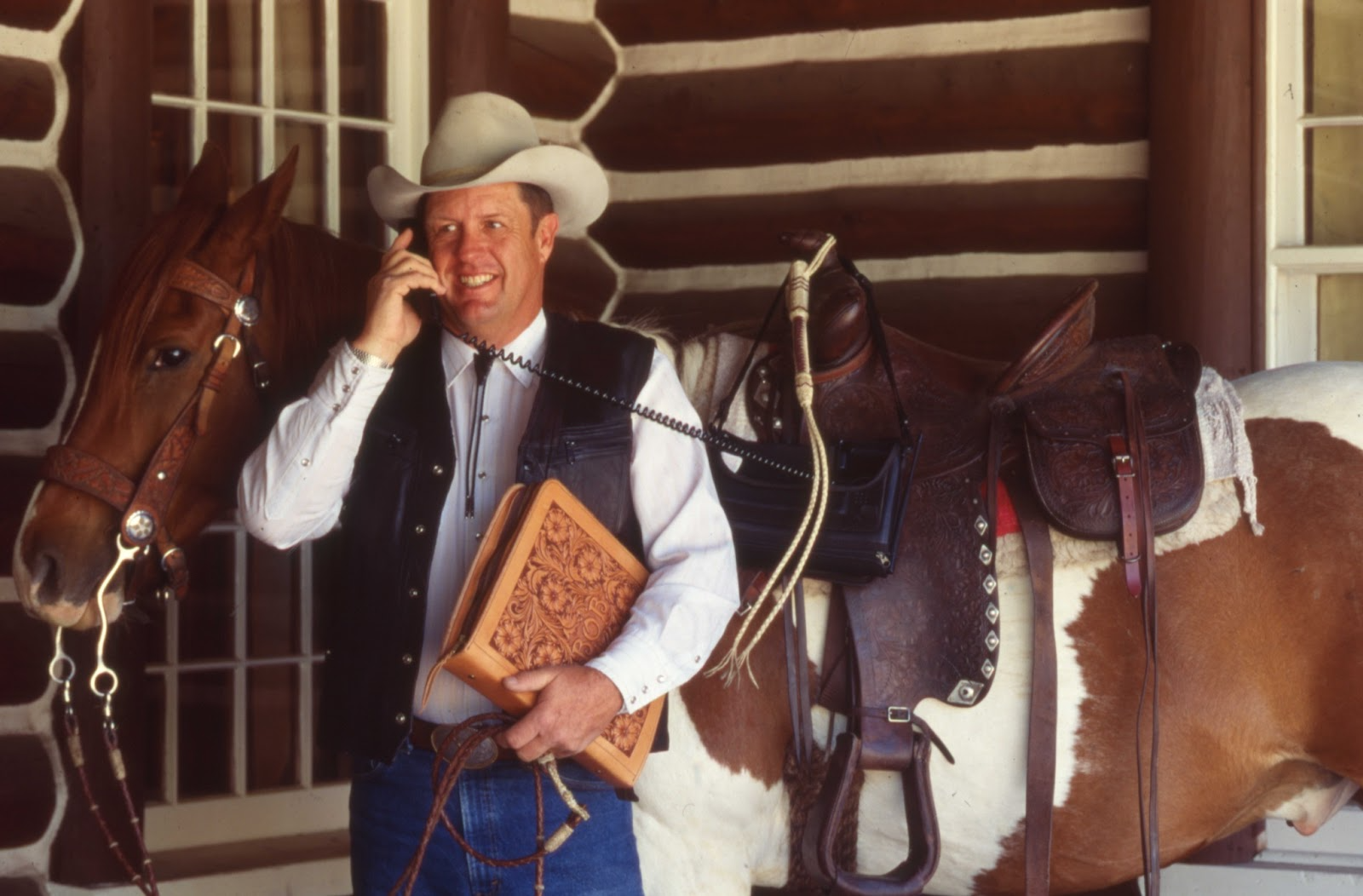
Bob Richard working at Yellowstone. Provided by Bob Richard
Life as a Yellowstone horse ranger
In the 1950s most boys Bob Richard’s age were working ranches or construction to earn money for college or trying their hand at becoming cowboys riding bucking horses. As Richard started his job as a seasonal ranger in Yellowstone, he too was mounting a horse - Big Red, that would be his equine companion for the duration of his time in the park. Though Big Red was known to his handlers as a troublemaker, the two bonded immediately when Richard went to pick out the three horses that he would ride to patrol.
“He [Big Red] walked up behind me and put his head in the grain bucket, and I just put the rope over his head and led him to the gate. I said, ‘this is the first horse I want,’ and the old cowboy said, ‘you can't have him,’” said Richard.
He was warned of Big Red’s unpredictable temperament and advised to leave that horse alone. In fact, Big Red was destined for the cannery because he’d bucked off so many people who tried to ride him.
“This caretaker says you're gonna get killed and I said, ‘I think I can handle that.’ Dad opened the gate, and I rode him over and back then I said, ‘I want this horse and two more like it’ and that's how I picked him.”
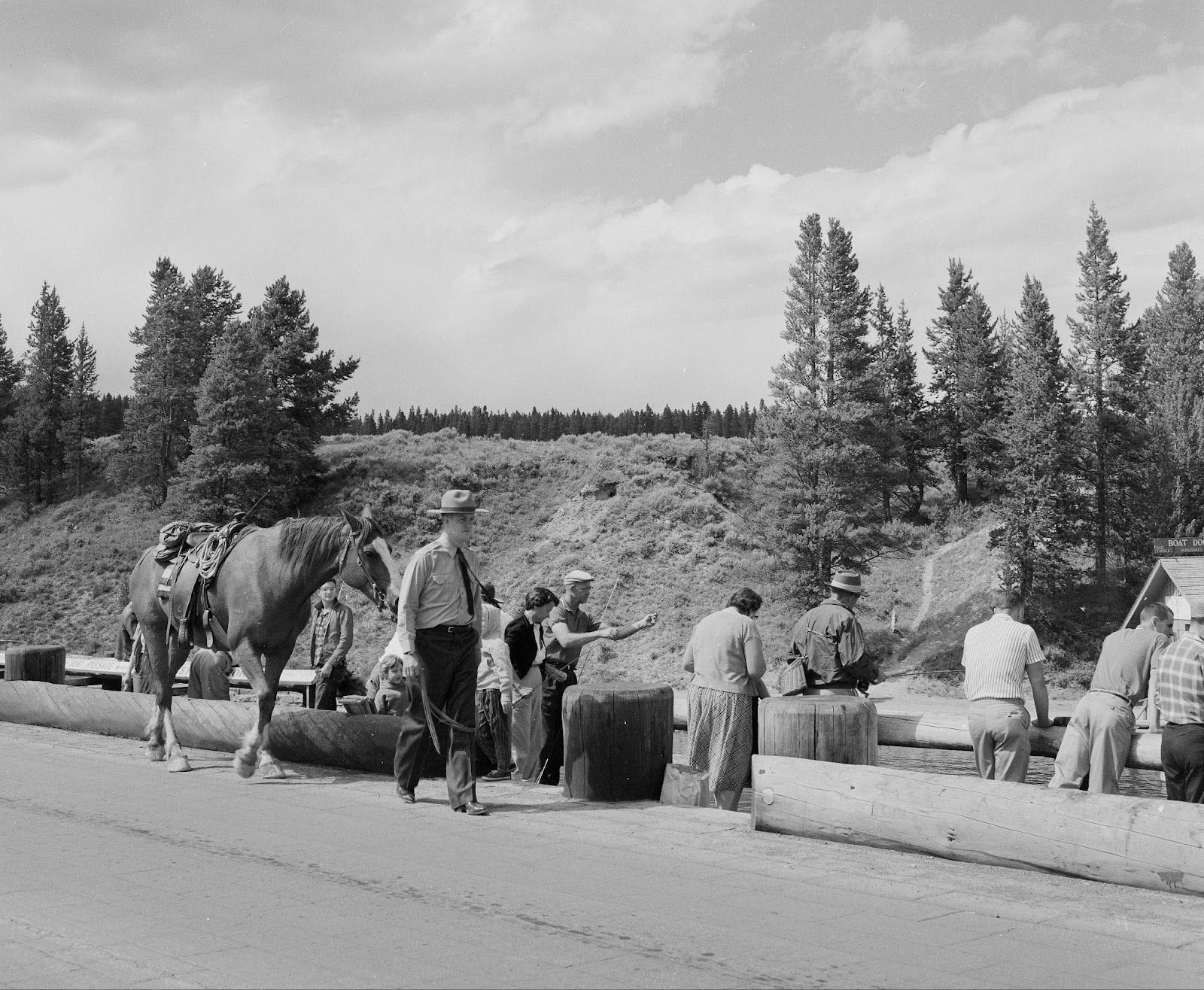
Bob Richard and Big Red patrolling Fishing Bridge in Yellowstone National Park. Provided by Bob Richard
Richard’s immediate bond with Big Red was special but it was a relationship the horse’s caretakers never expected to last.
“I never had a problem. He'd stand with my reins on the ground while I was talking to somebody in the campground, and he'd stand on the side of the road until I came back and got him. He was an unusual horse,” said Richard.
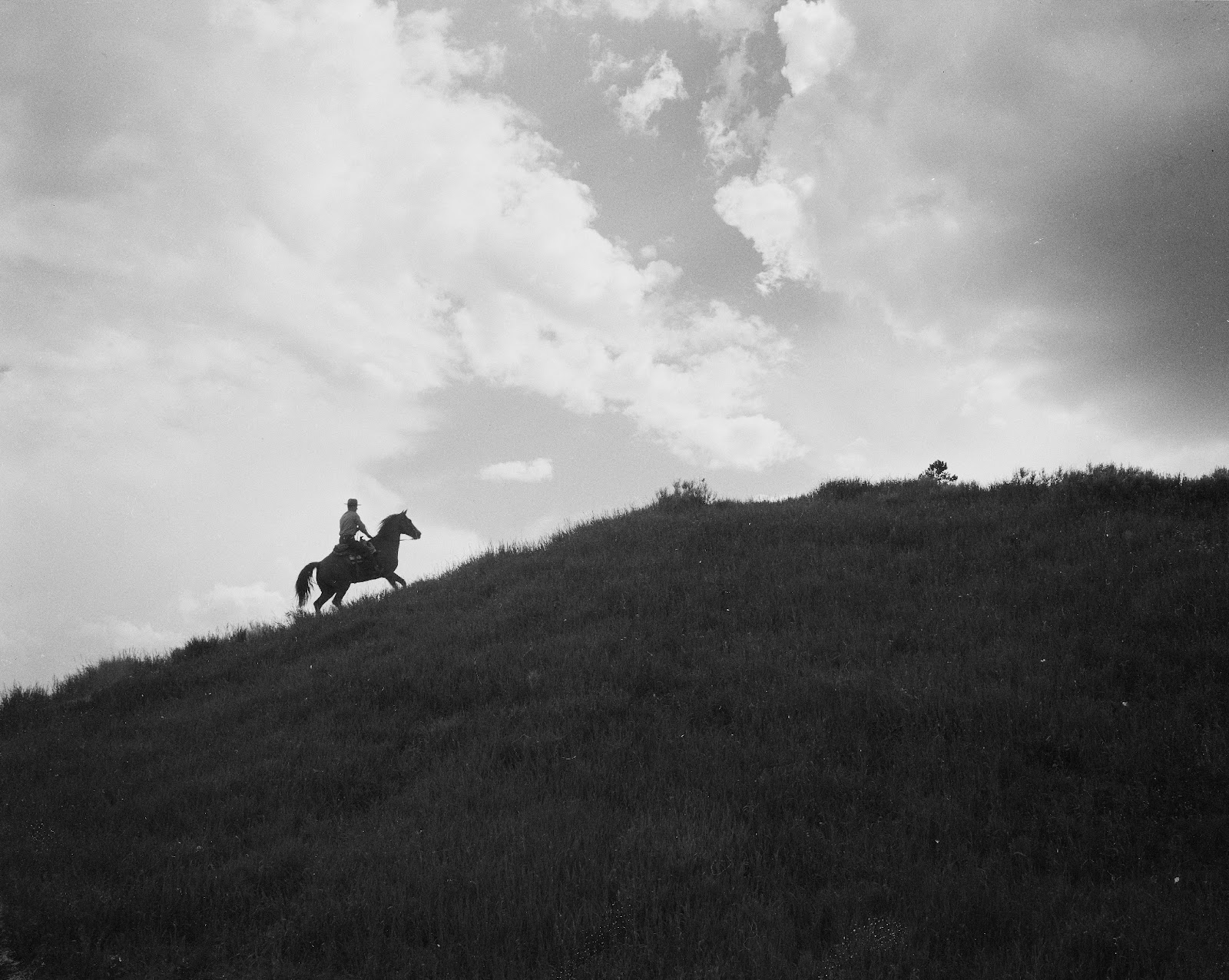
Bob ends the day in Yellowstone’s backcountry as a horse ranger. Provided by Bob Richard
While Richard spent most of his time working with guests to help them navigate trails and find their way in the campgrounds, the backcountry of Yellowstone held special meaning. In Yellowstone’s 2.2 million acres of land, people only use about three percent of it, and the rest is wilderness. Richard helped teams clear some of the 1200 miles of trails through the backcountry and it’s where he found the most peace in the park.
There was a time in the 1880s through 1918 when soldiers patrolled the park and built the cabins that had visitor logbooks, so the back country reminds him of the more rustic and historical side of Yellowstone.
“I love being in the outdoors, smelling the wood smoke and sharing history and the stories of the soldiers’ time here. The beauty is amazing and the smell...the wildlife...” Richard drifts off in thought reminiscing as mentally takes himself there again. “I wish I had taken more photographs when I was a park ranger. I left that up to my dad at that point, but in the backcountry, you're free.”
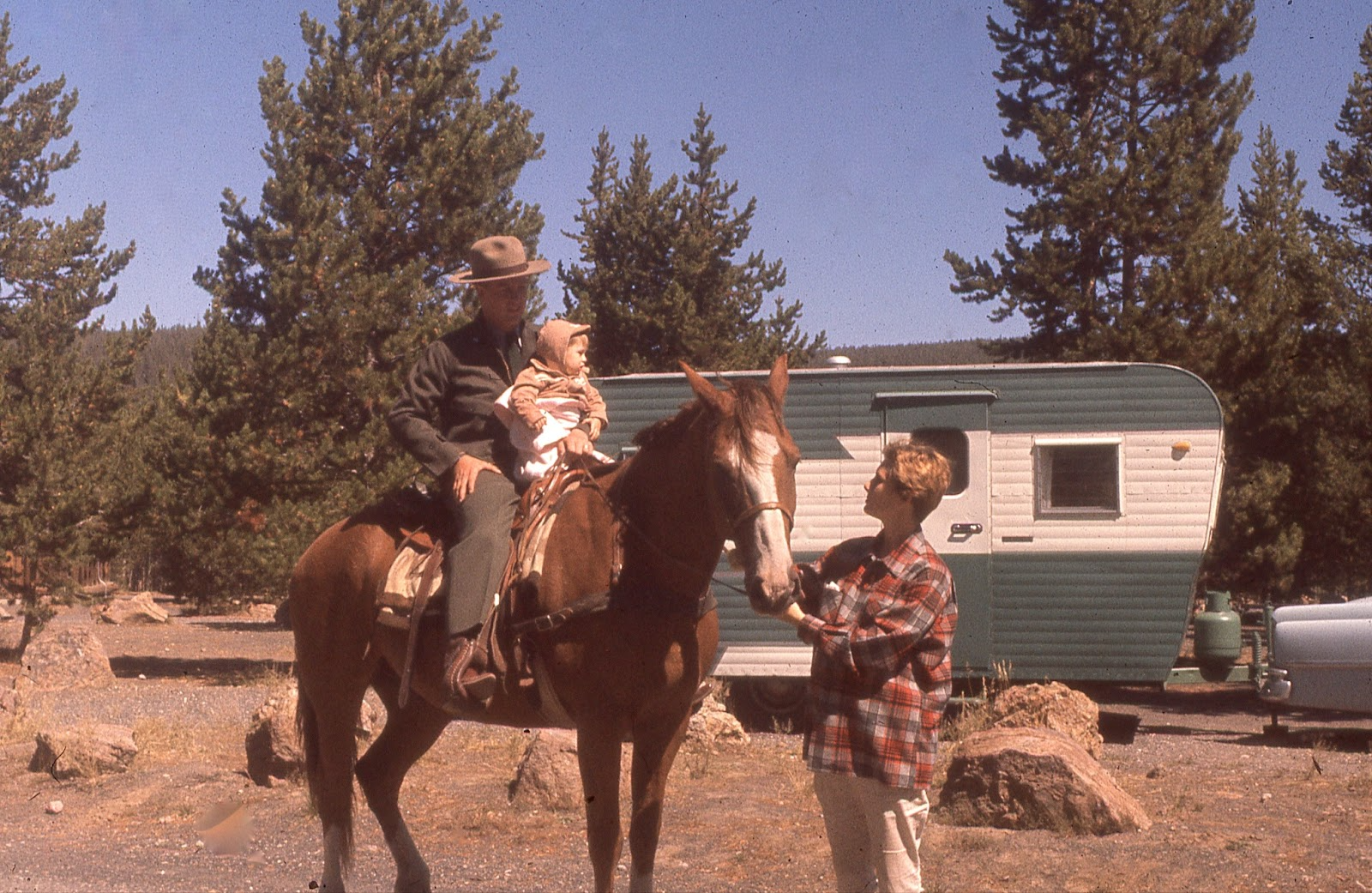
Bob, wife June and son Bobby with Big Red while living in Yellowstone. Provided by Bob Richard
Beyond just patrolling the park, Richard spent part of his life living in it. He met his wife Alice June Irvin Richard in the park, and two of his four children spent part of their childhood living within the park boundaries. It was a rustic, but comfortable life surrounded by the beauty and nature that was a part of his soul.
“It was kind of like living at the ranch,” said Richard. “We didn't have electricity, we didn't have running water, we had to go get water out of the creek and we had an outhouse and wood stove. I loved it.”
For his wife though, wilderness living took some getting used to.
“She sat on the bed the first night we spent at the cabin, and she said, ‘well where are we gonna sleep?’ And I said, ‘that old bed there,’” said Richard with a slight laugh explaining the joy they shared getting acclimated to life living off of the land. “She made friends with any animal, and she just loved being out there as much as I did.”
This was their way of life while working and raising a family in the heart of Yellowstone National Park, until 1960 when Richard left to become a naval aviator in the U.S. Marine Corps.
“It was very difficult to leave,” said Richard. “I was so busy learning a new way of life that, to be honest, I didn't think much about Yellowstone unless it was put in front of me. I had to learn to adjust to the big city and to the military way of life.”
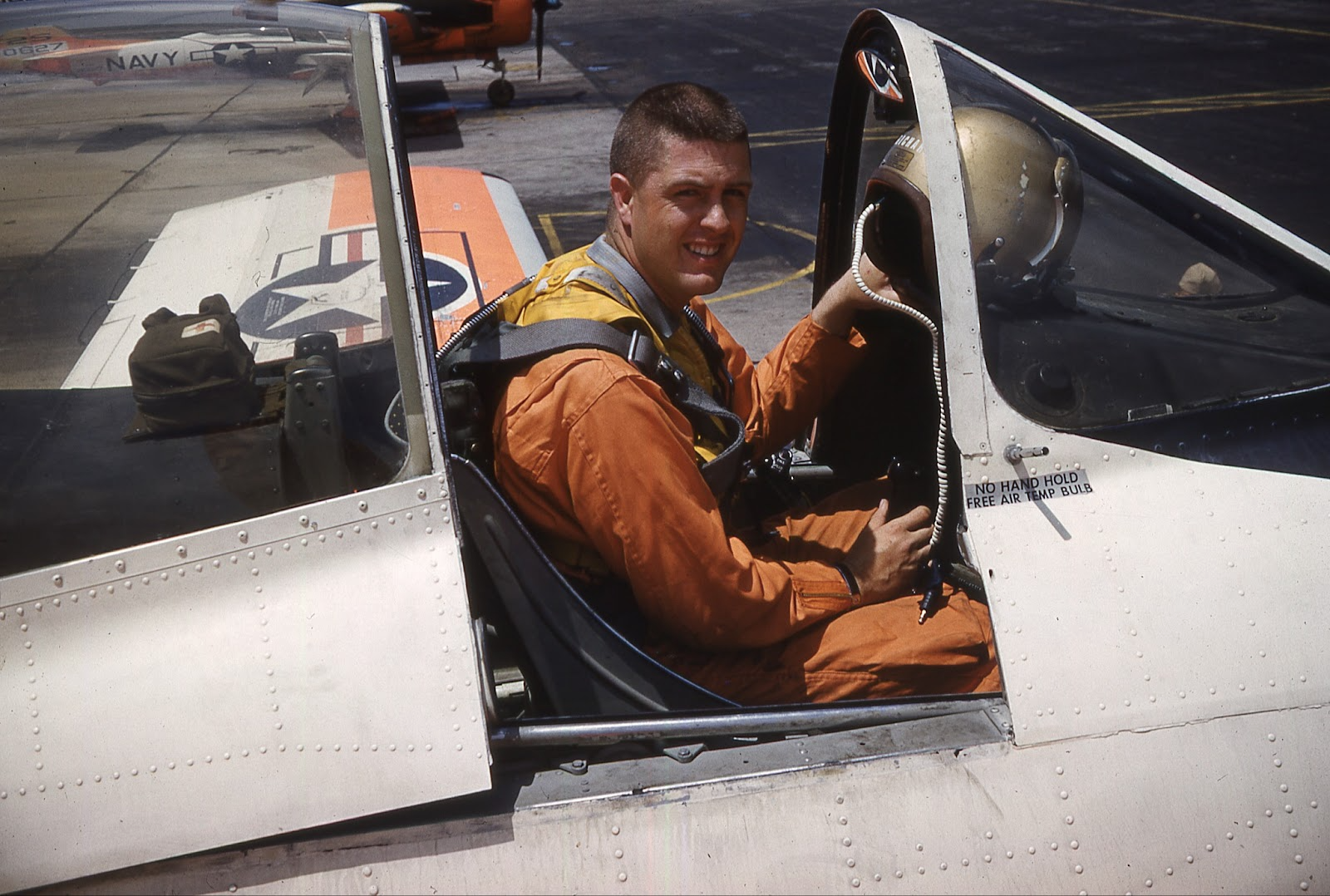
Bob Richard as a naval aviator in the U.S. Marine Corps. Provided by Bob Richard
Though more pressing things like military combat training took priority for part of his life, Richard’s father made sure that Yellowstone was never too far away, knowing that small reminders of home, if even for only small moments of time, were meaningful.“My dad probably did 100 or 200 articles on the reduction of bison elk in the park as well as the fisheries during the 50s, 60s and 70s so even when I was flying in the military dad would send me his articles so I stayed on top of what was going on in Yellowstone,” said Richard.
After 12 years of active military service Yellowstone waited for him to come home, remaining just as welcoming as the day he left. Even when Richard took other jobs over the years as a school administrator, swimming coach and teaching disaster training with the Red Cross, Yellowstone, whether through visits or thoughts, was the one constant in his life.
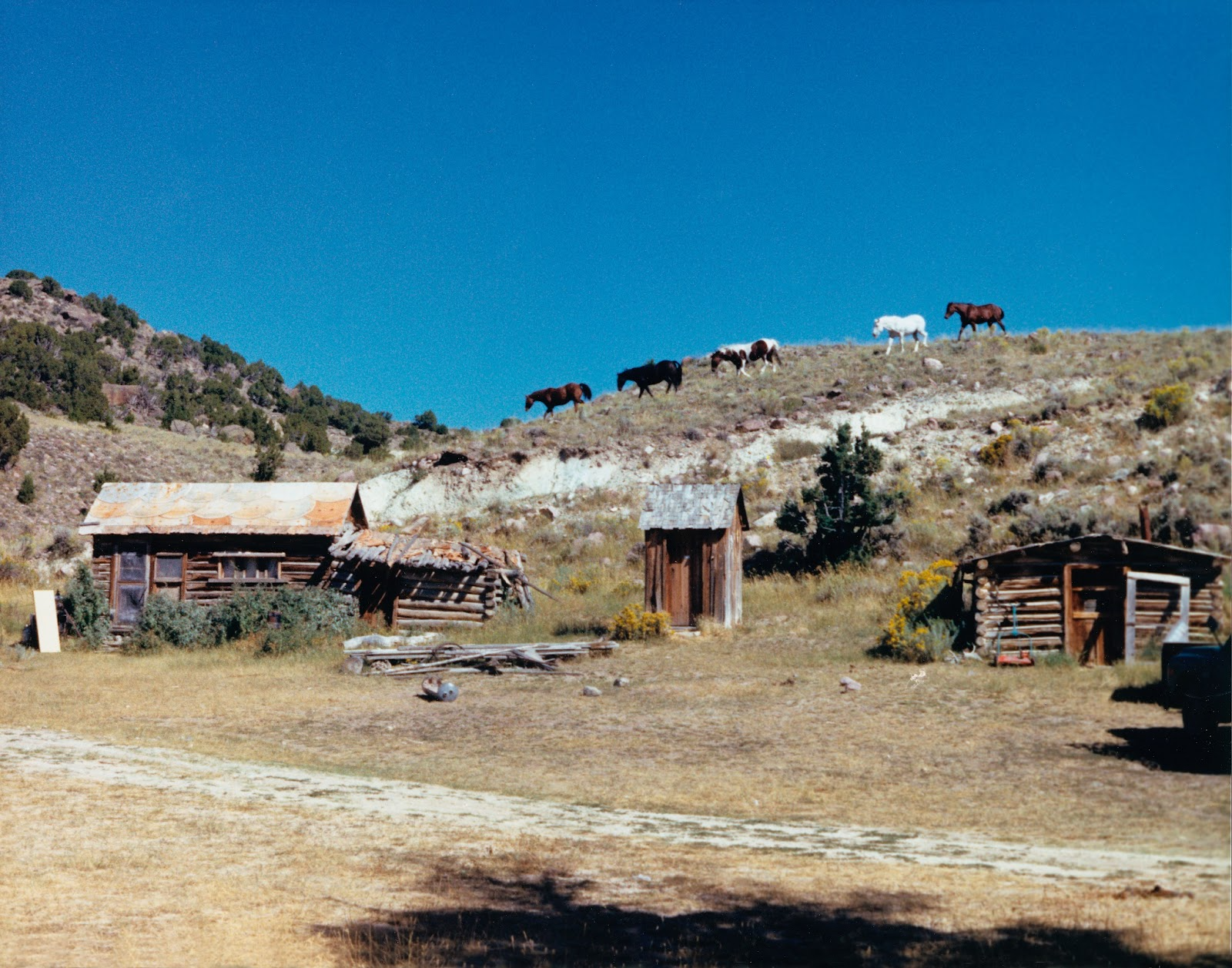
Bob Richard’s family ranch. Provided by Bob Richard
Legendary ties and legendary tales
Most people who visit the Cody and Yellowstone region in Wyoming only hear the tales surrounding Buffalo Bill, but for Bob Richard the legend was a household name and family friend. Buffalo Bill made stops at the family ranch for visits befriending the Richard family while being an integral part of building the surrounding community.
Richard’s grandfather guided all of Buffalo Bill’s guests on hunts in Yellowstone, including Prince Albert of Monaco in 1913.
“Bill Cody asked granddad to take the prince and his three bodyguards into the back country. They set up camp and the first day out the bodyguards went along. Because granddad spoke French growing up, he told the prince to leave the bodyguards at camp after that because he said they were a nuisance. The bodyguards were German soldiers, and they were unhappy about being left in camp, but the prince and my granddad were very successful in their hunt and got along well. The prince was gonna come back when World War I broke out, so he never made it back for the second trip,” said Richard.
As one of the closest living ties to Buffalo Bill that remains, it is important to get Bob Richard’s perspective and insight on a lingering debate about where the western legend is buried. According to documentation from the Denver Public Library, before Buffalo Bill died in 1917 his will stated that he wanted to be buried on Lookout Mountain in Colorado but there was a first draft of the will that existed stating he wanted to be buried on Cedar Mountain just outside of Cody, Wyoming, the town in which he founded.
The debate has lingered for decades, even stirring conspiracy theories about Buffalo Bill’s body being replaced in a Denver morgue by a vagrant and then taken to Cody for burial.
“People call me and say, is he up on Cedar Mountain or is he on Lookout Mountain in Denver? My comment is that I was not even born at the time,” said Richard. “I've heard the stories and the bottom line is when I die, my children have been told to take my ashes and scatter them on Cedar Mountain where Buffalo Bill could be. So, I don't know that he's there. Nobody else knows if he's there.”
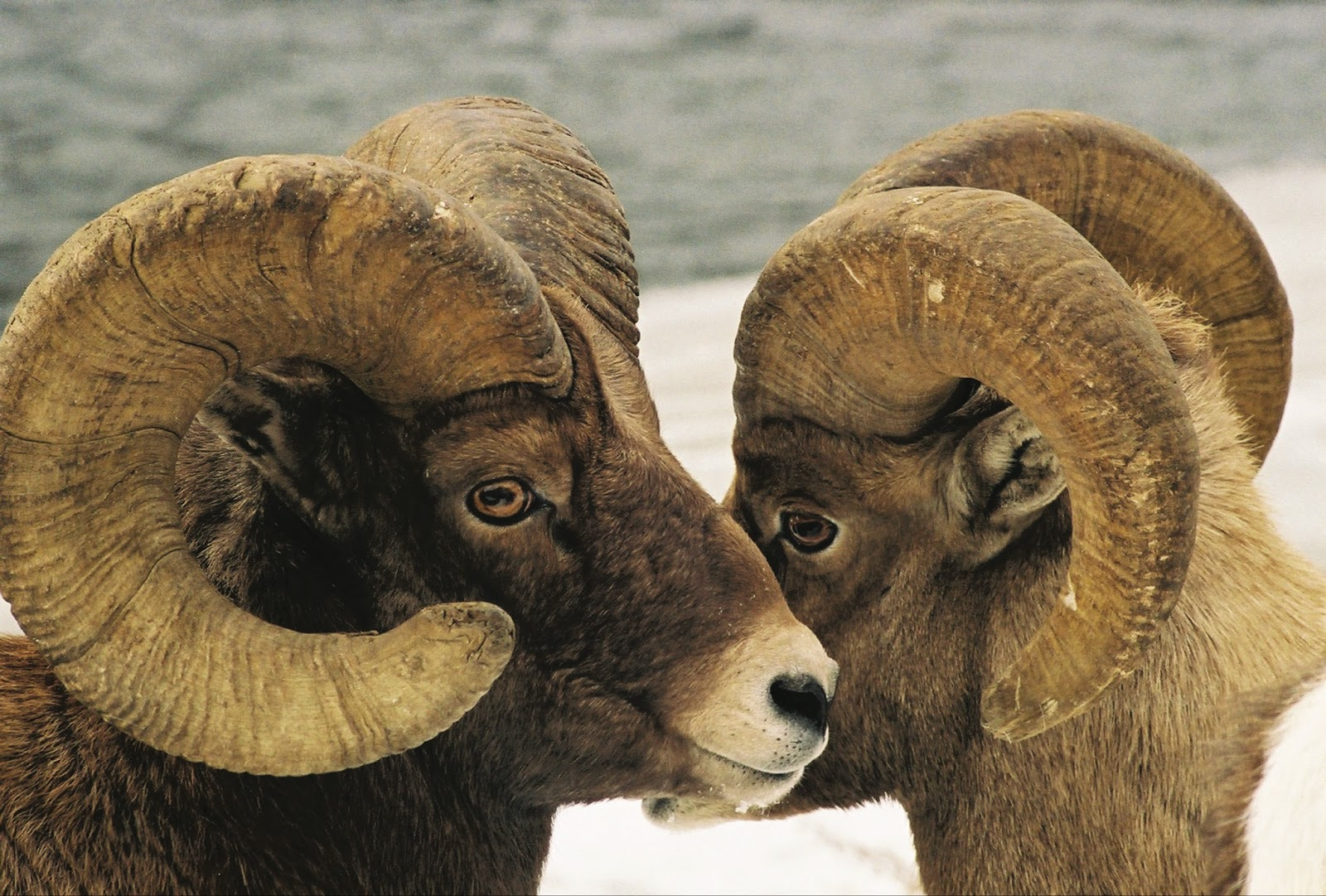
Mountain sheep rams in Yellowstone. Provided by Bob Richard
Protecting Yellowstone for future generations
The intimate and lifelong connections to Yellowstone National Park make Bob Richard passionate about protecting it. Even still, after a lifetime of being in the park, every visit brings a new experience.
”Yellowstone still rings my bell every time I go,” said Richard.
Adopting a love of photography from his father, Richard has developed an extensive library of images capturing some of the best moments of the park’s wildlife and nature. Which ones are his favorite?
“The wolves, the coyotes, the chipmunks, of course the bear, the elk, the moose, the deer - knowing their migration patterns and knowing the times that they are breeding. I watch mountain sheep every fall between Cody and Yellowstone with the big rams butting heads and fighting over the girls and I just drive up to take pictures. I never get out of my car because I don't want to disturb the animals,” said Richard.
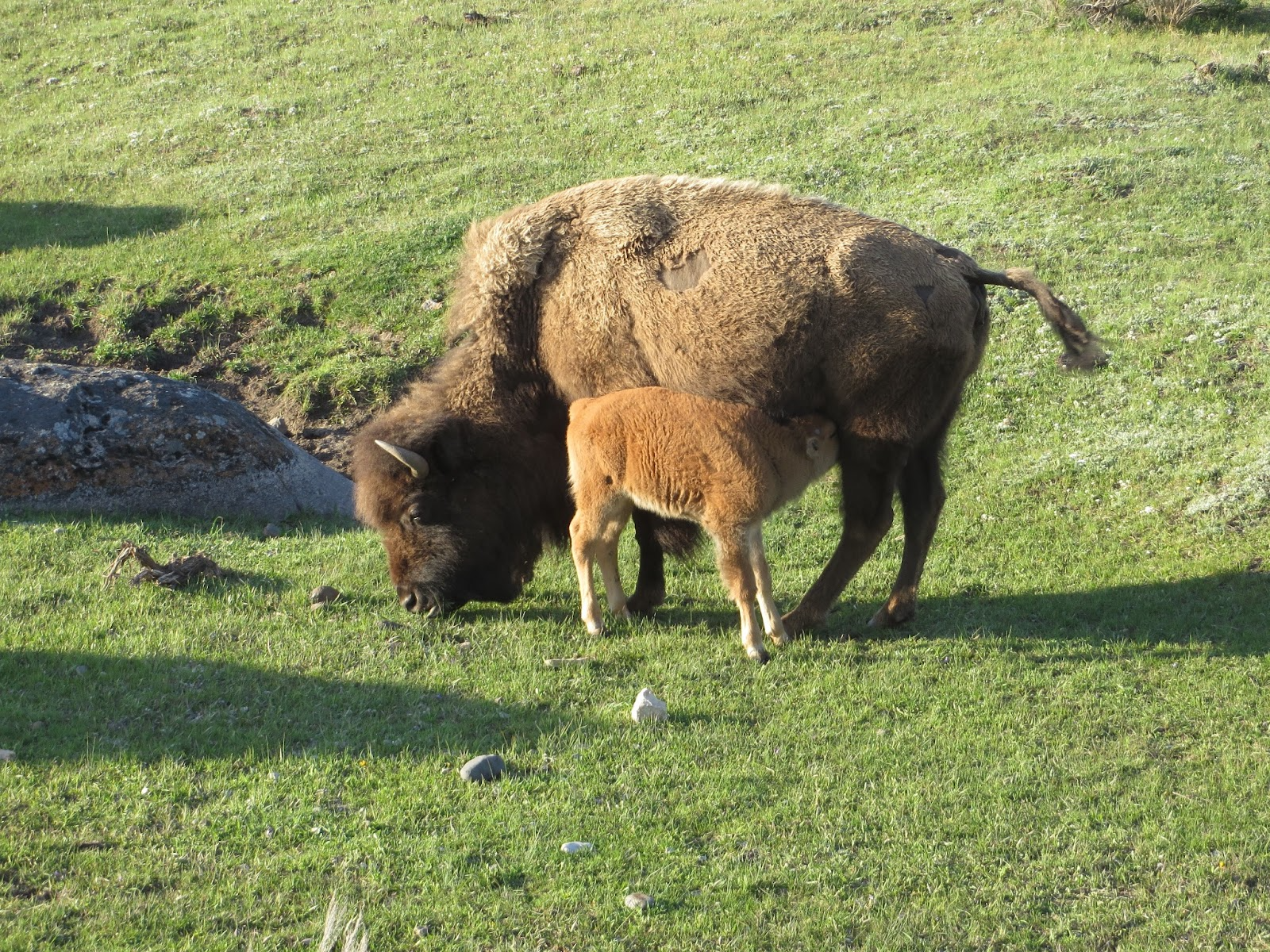
Bison and calf in Yellowstone. Provided by Bob Richard
Richard believes that the animals get just as much joy out of the visitors as the visitors get out of seeing such an abundance of wildlife roaming freely in their natural habitats.
“When guests or guides I train see the buffalo run next to the road and they say, ‘wow what are they doing?’ And they're chewing their cud, I tell them that they're getting their summer entertainment watching the tourists,” Richard says with a chuckle, finding as much enjoyment in the punch line now as he has for the decades he’s used it with guests.
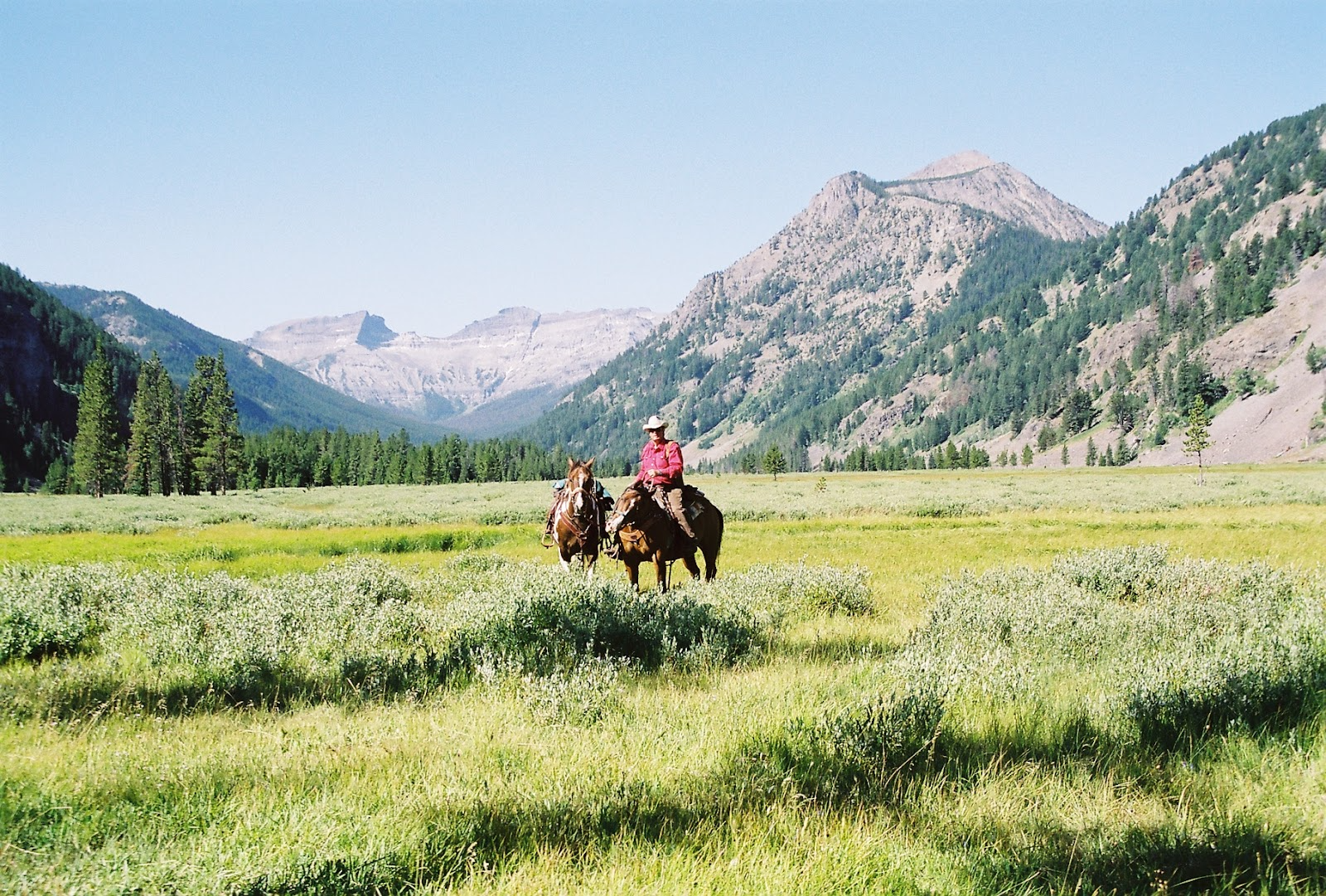
Bob Richard on horseback in Eagle Creek Meadows. Provided by Bob Richard
After all these years, Yellowstone is where Richard still finds peace. He makes frequent visits to the back country and a special place called Eagle Creek Meadows, where the park made its biggest impression on him as a child. At only seven years old Richard was hired by his uncle to help wash dishes and do other odd jobs for guests who were staying in the rustic cabins.
“I caught Brook trout by crawling on my stomach and I used a large pine tree pole that was trimmed for me with a leader tied on it and a piece of bacon. It was my job to catch enough trout for the guests for breakfast and that's what got me started, but I was in the most beautiful place in the world,” said Richard.
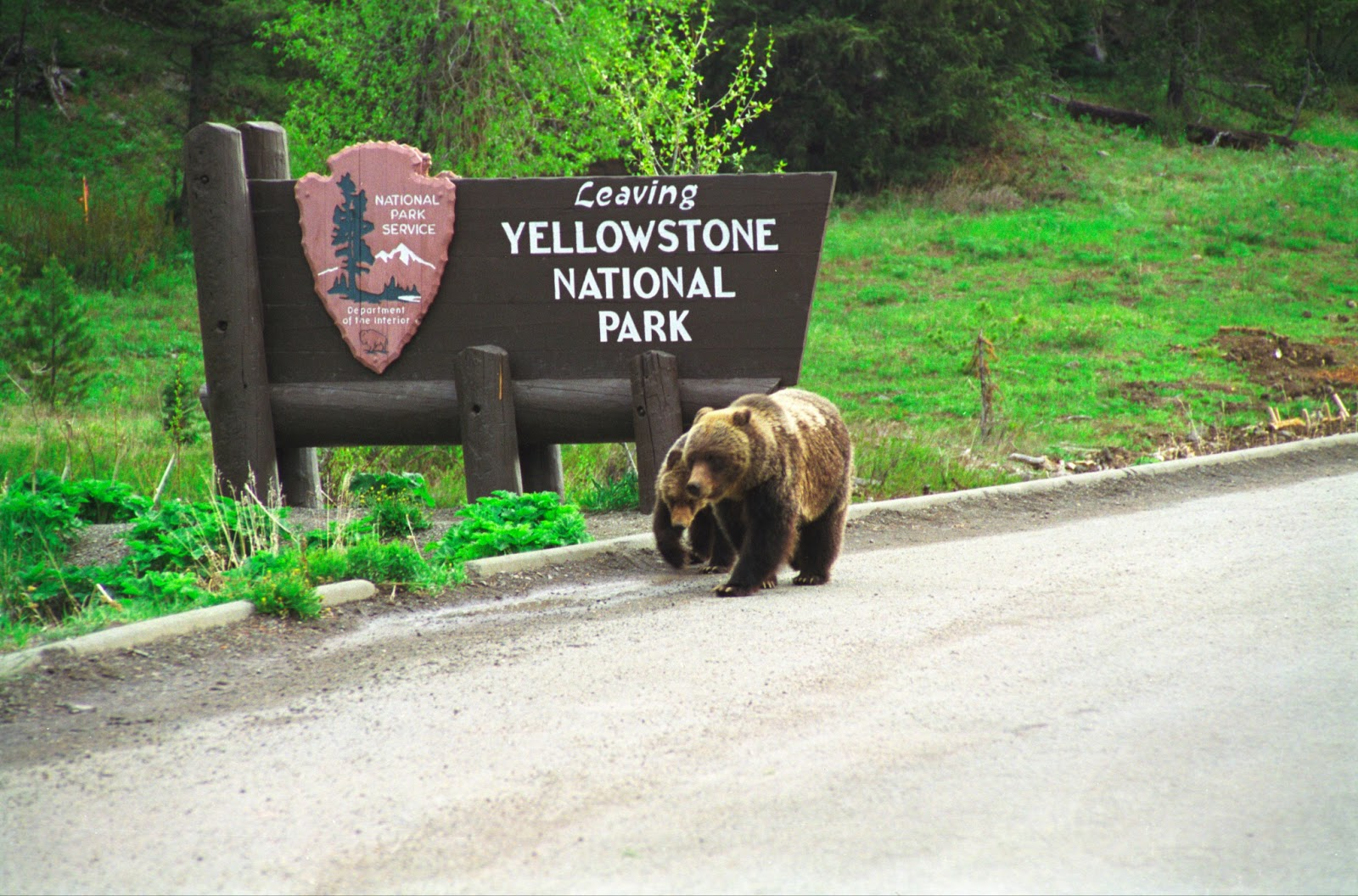
Grizzly in Yellowstone. Provided by Bob Richard
He wants visitors to find their own experience and meaning in Yellowstone while visiting which he hopes inspires them to want to protect it.“There's something for everybody whether you're an artist, a photographer, a hiker, no matter who you are. Visitors can absorb the outdoor way of life, the geology, the old and the new pine trees, programs at the ranger stations and no matter where you go in the park, there is something that meets that interest,” said Richard.
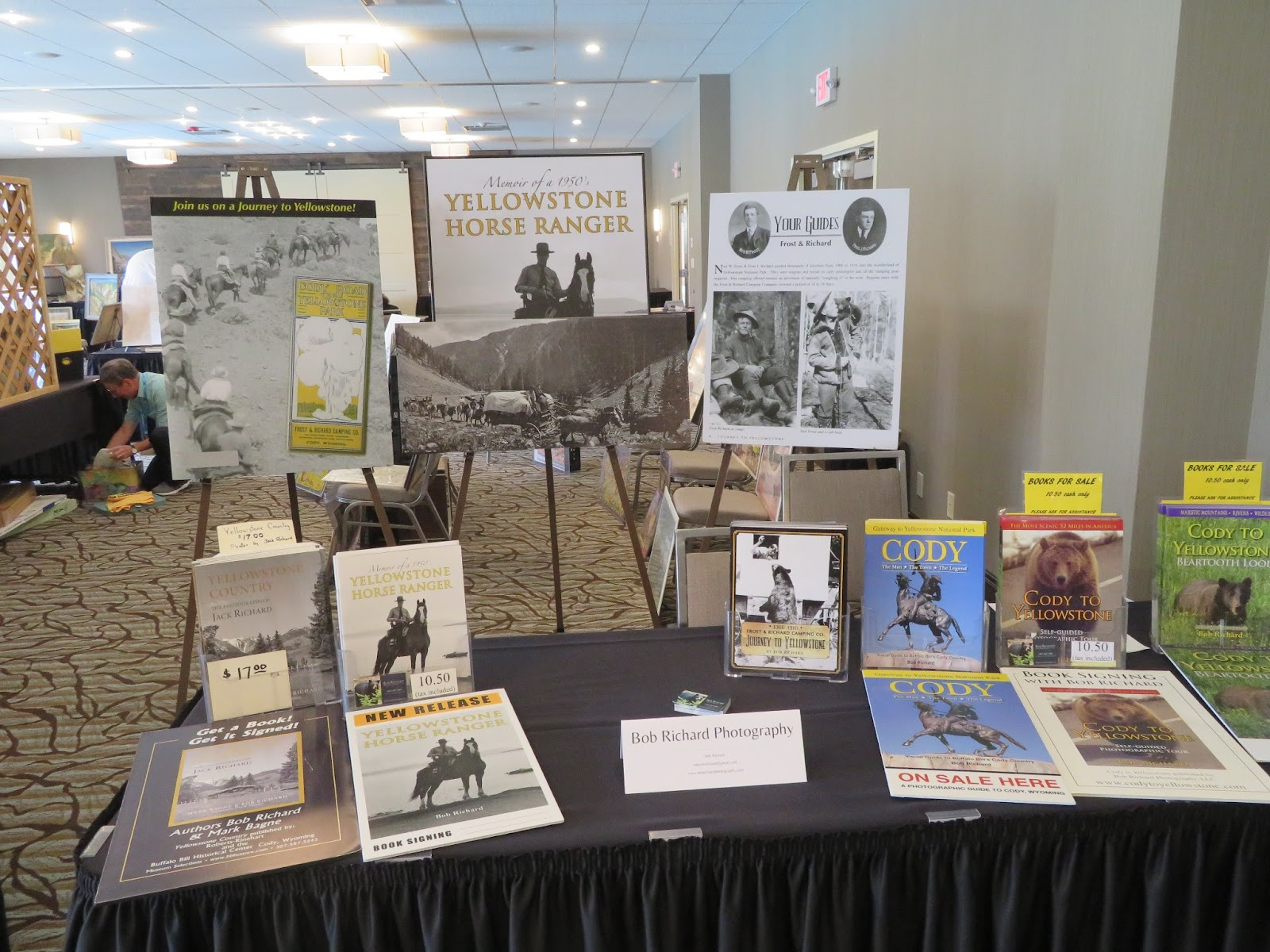
Bob Richard’s books on Yellowstone. Provided by Bob Richard
Richard has authored multiple books, always including words and images to make readers think deeper about treasured Yellowstone, what it represents, and the role the visitors play in protecting these natural spaces that are threatened by so many external forces. One of his most profound quotes is a mantra that Richard picked up from a former district ranger and one that he now passes on to others that says, “remember who you are and what you stand for.”
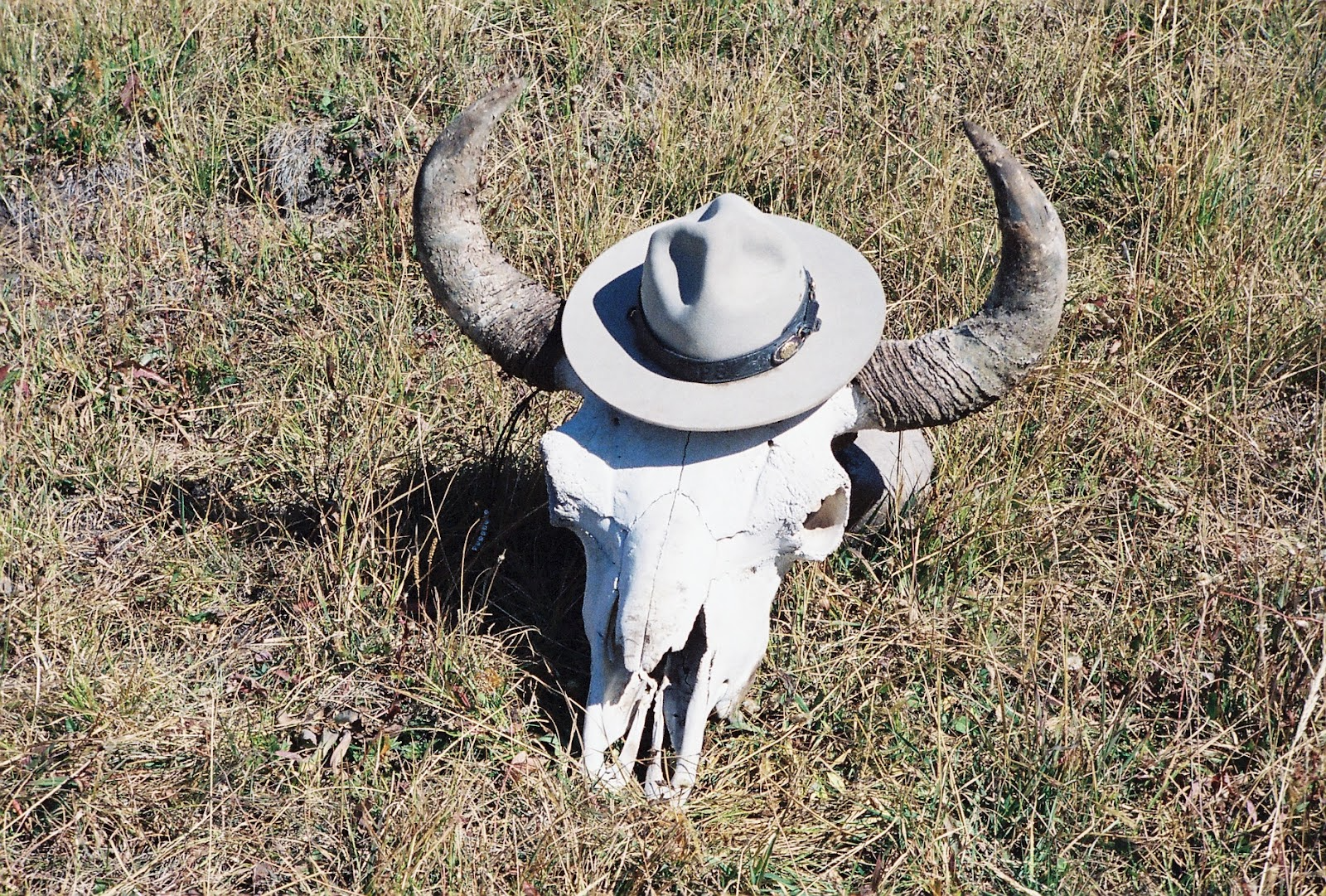
Ending photo in Bob Richard’s memoir. Provided by Bob Richard
These are the last words on the last page of Bob Richard’s book, “Memoir of a 1950s Yellowstone Horse Ranger,” and a testament to the devotion he has for Yellowstone National Park and the special way that it touches everyone who visits.
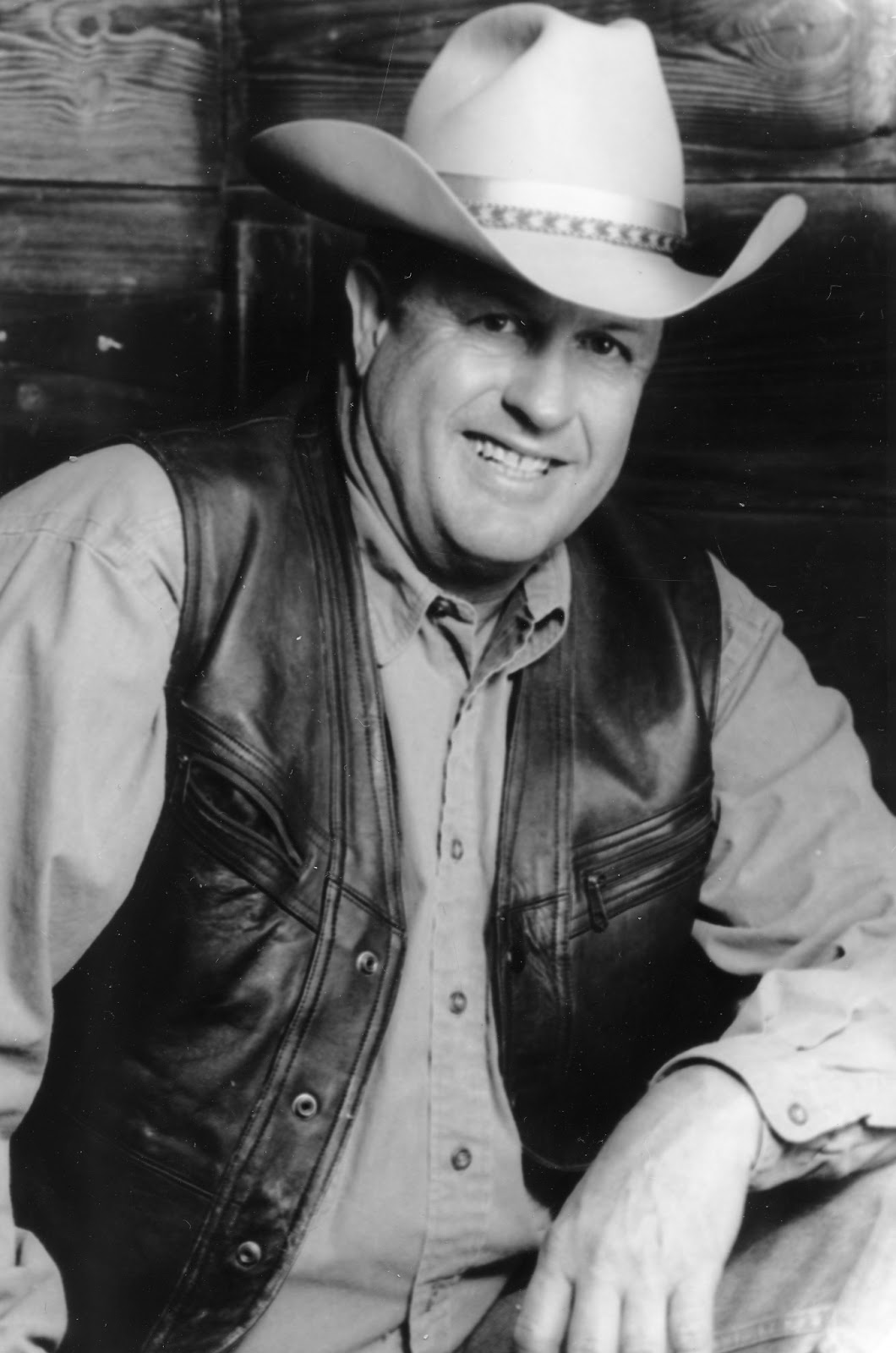
Bob Richard as the first Front Country Horse Patrolman in Yellowstone National Park. Provided by Bob Richard
